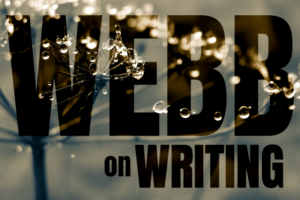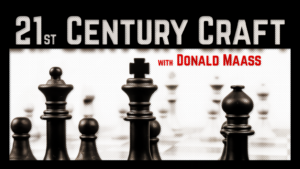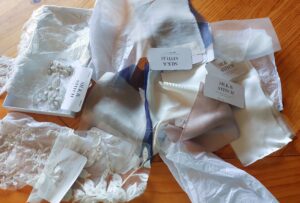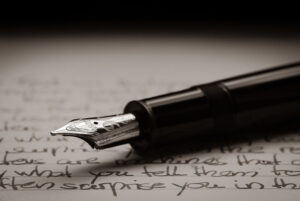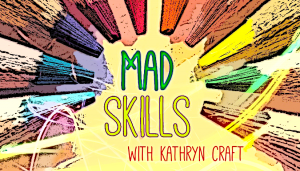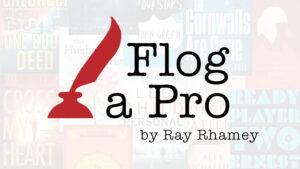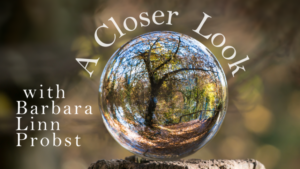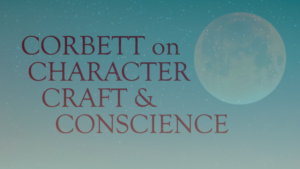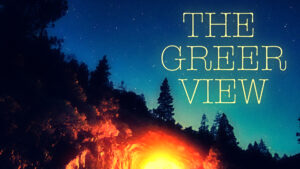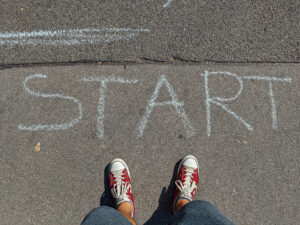CRAFT
I must admit, I have history on the brain these days. It should come as no surprise that as a historical fiction writer, I subscribe to the idea that history is always relevant. Understanding what has passed is the answer to our whys and hows, and becomes the building blocks of the future. While reading (and writing) historical fiction, I’m searching for aspects not always present in other genres of fiction, that are, in fact, the hisfic genre’s strengths. Things like:
Today, history is being made around us, for better or worse, and as writers, it’s nearly impossible not to consider how that affects our ways of life as well as our thinking. To many of us, we’re watching in horror as history’s dark past becomes the present once again. It seems we are doomed to repeat history as is so often said, because the human memory is short, and frankly, I don’t know many teenagers—or many adults—who have learned from someone else’s mistakes. Mostly we learn from our own. So here we are, in the midst of a great conflict.
Lately, common words in our everyday vocabulary are:
protest, resist, contradict, agitate, depose – all examples of CONFLICT
Another way to view conflict J. Turnbull of Oregon State University shares with eloquence: conflict really means “thwarted, endangered, or opposing desire.” These are fundamental words to those who wish to protect democracy, protect rights, protect others, but they’re also fundamental words in our writing lives. Conflict in all its forms are essential to a character’s journey and development, and ultimately, to the outcome of their fate.
There are many ways to sew conflict into a story, both externally and internally. A combination of both makes for a stronger narrative in general, though some character-driven stories are quite successful with the majority of the conflict being internal as well. We probably know a lot about conflict already, but I find after years and years of writing, it’s still easy enough to lose my way. Fiction writing is complex and each new story brings its own set of challenges. To help keep me on […]
Read More
Back when I used to work in advertising, I routinely found myself at photo or commercial shoots that appeared to be unequivocal disasters. A freezing fitness model wearing a thin running tank top in March in Baltimore. A professional golfer on a beautiful day in Texas bundled up in a rain-proof jacket. A red sweater that needs to be blue because of a problem in a factory on another continent. A midday that’s meant to be sunrise.
As a copywriter I was a natural-born pessimist, so in these situations I’d always look with trepidation at one of the art directors. “Dude, chill,” they’d say. “We’ll fix it in post.”
I was reminded of that expression last year after finishing the first draft of my sixth novel. I’d pitched the book as a holiday love story about a grieving widow and widower who find comfort and eventual happiness while binge watching classic Christmas movies together. A few weeks after I turned it in, when my editor called with her feedback, our conversation started out great. The draft was funny, heartfelt…etcetera.
“I do have some notes, though,” she said.
I’ve been at this long enough to know that editors always lead with what’s good, so I was prepared for that. Still, though, I held my breath.
“Your main characters don’t really watch that many movies together,” she said.
I kept not breathing as she noted the exact number of movies watched. It was, indeed, not many.
“And, you know,” she continued, “for a love story, they spend almost no time together until the very end. And, well, there’s not a lot of Christmas stuff going on, is there? You’d think there would be, it being December and all…and a holiday book.”
I made a noise like, “Hmm,” as my vision blurred from lack of oxygen.
“Oh, and also,” she said, “you’re ugly.”
Okay, she didn’t say that last bit, but her point was clear, and she was absolutely right: I had a lot to fix in post.
We all know that first drafts are never perfect, and revision is as much a part of the writing process as carpel tunnel syndrome and printer jams. But here are some tips for handling big revisions, the full-on rewrite kind, the ones that make you wonder if your first draft is…well, too much of a disaster to even save.
Revisit Your Pitch
A pitch is really just a bunch of promises, right? Maybe your pitch is a formal document saved on your computer. Maybe it’s just a collection of thrown-together thoughts saved in your head. Either way, go back and look hard at the promises you made about the book you planned to write. You promised that it’d be about something. It would feel a certain way—tonally, esthetically. It would fit into the literary landscape somehow, either through genre or comparative titles. Readers would care about it for several very specific reasons. Go through each promise and ask, “Did I deliver on that one?” Make a list of every time the answer is no, then start your revision there.
For me, I’d wandered away from my book’s fundamental hook to the point of abandonment. It was going to take some effort, but my main characters—their names are Grace and Henry, by the way—were going to […]
Read MoreJohnny stole a pencil. Johnny is a third-grade student at Central Elementary. The pencil he stole had pictures of rocket ships on it, and a big eraser on the top. It belonged to his classmate Susie, who was upset. When the teacher discovered the pencil in Jonny’s desk, she referred the matter to the principal, Ms. Kindly.
Ms. Kindly brought Johnny to her office and non-judgmentally explained to Johnny that he had made a choice. The Central Elementary rule was no stealing, which Johnny knew, so the choice he had made was inappropriate. Choices have consequences too, and so Ms. Kindly said that Johnny would miss recess that morning. He would stay inside, apart from the other students, and reflect on his choice and its consequences.
Ms. Kindly asked Johnny to think about how his choice had affected Susie, who wanted to be an astronaut and who received the pencil on her birthday. Susie, who was a nice girl, now doubted whether she could trust Johnny. Johnny sat and reflected. When the recess was over, Johnny apologized to Susie and returned the pencil to her, freshly sharpened.
Good outcome. Caring principal. Johnny’s choice had a negative consequence, but he learned from it and became a better decision maker, an important life skill. Now, let me ask you a question: Is the story of Johnny and the stolen pencil a good story?
Never mind. Answer: no.
Why not? As I’m sure you can see, Johnny’s story is complete. It has a beginning, middle, an end and a sharp point—literally. However, it is low in drama. The transgression is mild. The conflict and characters are simple. Johnny has no inner struggle. The outcome is easily achieved. There is a lesson to be learned, sure, but it’s obvious and inarguable.
To put it succinctly, Johnny’s story isn’t heightened. It only mildly moves us. It doesn’t cause us to think anything we couldn’t have thought on our own. What would it mean to heighten Johnny’s story? To find out, let’s look at the handling of choices and consequences in a couple of novels.
Specifically, let’s look at novels that touch upon the topic of voyeurism. No, not that kind. If you want erotic fiction of that flavor there’s plenty of it out there, knock yourself out. What I’m talking about are stories about seeing and hearing what you shouldn’t: choices, consequences, and how they become big.
The Warning
Hannah Morrissey’s Hello, Transcriber (2021), is set in Wisconsin’s most crime-ridden city, Black Harbor. Hazel Greelee takes a job as a police transcriber. Her job is to sit in a dark room at night, remotely transcribing detectives’ interviews of suspects. The sessions begin with a detective saying from the other room, “Hello, Transcriber” (hence the title). Naturally, Hazel hears disturbing things. Her life lacks purpose, and she thinks that what she’s overhearing in the dark could turn into a good novel. Can you see what’s coming? Hazel ‘s curiosity gets her mixed up with detective Nikolai Kole who involves her in the case of the Candy Man, a drug dealer to children.
All is not as it seems, of course, and the consequences of Hazel’s choices are harrowing. Should Hazel have known better? As she is recruited in the novel’s opening, Hazel is clearly told […]
Read MoreWhen it comes to creating a believable setting or background for a work of fiction, sensory inspirations are very important. Writers need to evoke a world in the reader’s mind which doesn’t just involve the visual and the auditory, but also hopefully bring the other senses into play—touch, smell, taste. It’s always been important to me, as I’m sure it is for many other writers, to experience the atmosphere of places I’m evoking through my stories: I like to actually walk in their streets, to see small details, to hear the soundscapes, whether that be birds, sirens, music, machines, to listen to the tone of voices. I like to experience the smells—good or bad, strong or faint—of those places, and their tactile textures, and the taste of the food you might find there. The sensory impressions you gain from all of it are invaluable. Even if a place is imaginary, I always base it on real locations, so the sensory aspects still ring true. And that means also being able to call up those impressions even when you are back home, and not just through your memory, but through aids such as notes, photos, and video and audio clips.
That works well for the visual and auditory aspects. But what about the other senses—touch, smell, taste? Their effect cannot be fully recaptured through photos, notes, or video/audio. More ephemeral than the visual or the auditory, those three senses are nevertheless crucial to evoking atmosphere: think for example of Proust’s famous madeleines. And it’s not just about place—it’s also about many other elements in a story that will make your fictional world feel absolutely real in a reader’s mind. How, for example, to describe the taste of a dish, if you haven’t tried it? How can you evoke the scent of a particular perfume, if you’ve never smelled it? Or the feel of a particular fabric, if you’ve never touched it?
For me, the answer is to collect concrete objects that bring my story-brain into direct hands-on contact with the sensory experience itself. Over the years I’ve done a lot of that. For example, for a novel I’ve been working on, I needed to understand how different types of silk fabric and lace embellishments might interact with each other and be used in design. I didn’t just rely on my imagination, my lived knowledge of how silk feels against the skin and my observation of a seamstress at work. I also purchased a range of fabric and lace samples which would enable me to see and feel first-hand just how a particular design might work with types of silk fabric. For the same novel, where there is a small but significant mention of the perfume Joy, I didn’t just rely on my memory of my beautiful grandmother’s favourite scent, I managed to find a miniature bottle of the vintage fragrance online, so I could experience the full power of it, and be able to describe it properly. Similarly, in another novel, recently published, where I wrote about the look, smell and feel of various flowers, I needed to actually have some on hand so I could accurately evoke them. In yet another novel, which is centred around food, I didn’t just cook several […]
Read MoreThis is a question that sometimes comes up when I do interviews. Writer Beware has been in operation for more than 25 years, yet it’s still so busy. There seem to be so many scams that target authors. Are writers somehow more vulnerable to fraud than other creatives?
In my opinion, no.
Writing scams aren’t unique. There are similar frauds in every creative industry. Headshot scams for models. Talent agency scams for actors. Representation scams for illustrators. Pay-to-play venues for musicians and artists. They may not be as numerous as writing scams, but they are widespread, and they use the same tricks and techniques to lure and ensnare victims.
WHY ARE THERE SO MANY WRITING SCAMS, THEN?
Because (again in my opinion) there are so many writers.
Other creative pursuits have boundaries and requirements that create bars to entry. Musicians need training, not to mention instruments. Actors and singers may have limited venues in which to practice their craft: there isn’t a casting call around every corner. Painters and sculptors need often-costly materials. Models must conform to various standards of physical appearance–much broader these days than in the past, but still restrictive.
But writing: writing is just words. Everyone has those. If you can speak, you can write, and all you need to follow your impulse is an idea and a computer, or pen and paper if you prefer.
Whether you should or not is a different question. But the accessibility of writing, along with the universal human desire for self-expression, inspires vast numbers of people to create a story or a poem or a book. And what good is a story or a poem or a book without readers?
As recently as two decades ago, the difficulty of getting published presented the kind of limiting factor that exists in other creative pursuits. But while there are still considerable barriers for traditional publishing, the digital revolution has created multiple publishing options that bypass the gatekeepers and make it possible for pretty much anyone to get their work out into the world.
The readers, though. That’s the challenge. In an ocean of other authors, a sea of books and stories, how does your reader find you? With so many writers asking that same question, it’s a ripe opportunity for scammers.
ALL CREATIVES ARE VULNERABLE TO SCAMS
If the bar to the practice of writing is lower than for many other creative pursuits, the barriers to success and recognition are just as high. Anyone can write and publish a book, but far, far fewer manage to make a career of it. Where desire is strong and success is an outlier, scammers cluster at the gates–and that’s true of all creative industries, not just writing.
Creatives’ vulnerabilities aren’t unique, but they are acute. Scammers set traps accordingly.
The lure of the shortcut.
Climbing the ladder of success is hard work. Scammers and opportunists purport to offer a way to succeed without putting in the labor, claiming they can cut through red tape, skip the middlemen, get you and your work directly to decisionmakers without the necessity of all the tedious steps and tasks you’d have to undertake on your own. Of course, such shortcuts don’t exist (or if they do, very few have access to them). But creatives want them to, especially if they’ve […]
Read MoreImagine you’re reading a work of fiction and you come across the names of two characters, Etazik and Walluba. Which would you guess to be the bumbling apple-shaped sidekick? Which one is wiry and quick-witted?
Just as importantly, how self-evident did that conclusion feel to you?
In a valuable recent post, Jeanne Kisacky showed how a name can reflect gender, religion, birth cohort, heritage, and cultural background. Today’s post extends the importance of thoughtful naming to the cellular level of sound.
A famous linguistics experiment uses the nonsense terms kiki and bouba to describe either a curvy blob or an angular pointy star. Devoid of any context, a significant number of respondents consistently associate the sharp-edged star with the quick, explosive sounds of kiki, while the rounded bouba with its languid pronunciation seems a better fit for the curvy blob. This finding holds across speakers of multiple languages and readers of multiple scripts.
I first came across these ideas when I earned my keep as a linguistic analyst, which meant, in part, that I read dictionaries in ten languages to check a proposed name’s associations in international markets. In 2003, for instance, the debut of the Buick LaCrosse was delayed when the company learned that a new, sexualized meaning of lacrosse had developed among Quebecois teens. The car name was changed in Canada, and many a linguistic consultant like myself was kept in business by worried marketing teams.
The conscious level of meaning is the one we commonly think about. Most names are chosen on this level, but another part of my naming work included examining the ways a given name might resonate in the subconscious realm.
The field of phonetic symbolism argues that sounds are more than just building blocks for words: the physical movements to produce them create subconscious meaning. Sounds are made by forcing air out of the lungs through the nose or the throat and over different parts of the mouth—the tongue, the teeth, or the lips. Each movement creates a different sound and, with it, a corresponding sensation.
Move your teeth close together and push your tongue upward. The vowel that results is the tiny bright [ee] sound. Gradually open your mouth while you continue to voice the vowel and it widens and deepens into [ehh]. A slack, open mouth makes the neutral schwa [uh] and the noncommittal [ah], then the [oh] and [oo] sounds result as you close your lips. The front vowels are petite and bright; the back vowels, with a cavernous closed mouth, produce a sense of wonder and awe (ooooh!). The meaning, according to phonetic symbolism, mirrors the production of the sound.
The staccato sounds of [t], [k], and [p] occur near the front of the mouth and require a puff of air in their production. These plosives, bright, shiny, and sharp, literally make a word pop. But put too many together, especially with the excitable front vowels, and you create a discomfiting cacophony. It’s hard to take something seriously when it’s tacky, teeny, icky, sticky, itsy-bitsy. Combine memorable and bright plosives with smooth vowels and a nice liquid sonorant, though, and you have a drink that aids focus but goes down easily: Coca-Cola.
The sonorant consonants, [l], [m], [n], [ng], and [r], force air through […]
Read More
Books have been getting a lot of bad press lately. According to Penn America’s website, pen.org, more than 16,000 book bans have been implemented in U.S. public schools since 2021, 4,000 of which occurred in the 2023-2024 school year alone—more than at any other time since the McCarthy era of the 1950s. Public libraries have been under assault as well, with many people questioning their relevance and even advocating for their closure.
Estimates vary as to when books as we know them were first produced, but for the majority of time since the middle of the 15th century, when the invention of the printing press made them available to common people, books were considered precious objects by those who owned them.
The idea that books were treasures held true well into the 20th century, a fact I was reminded of recently when I pulled a few antique volumes off of a shelf in my living room. These clothbound gems, a couple of which were published in the mid-1800s, are marvels to behold.
The first in a two-volume set, Ruins of Ancient Cities by Charles Bucke, published in 1848 by Harper & Brothers of New York, features a detailed etching of ancient Athens across from its title page. The indentations made by the printing press on the book’s pages can still be seen if you look at its elegant serif typeset at just the right angle, a reminder that someone painstakingly set the type for all 360 pages by hand, a feat of craftsmanship few people living today could accomplish without error.
Perhaps even more impressive is Everyman’s Library: A Short Biographical Dictionary of English Literature by John W. Cousin. Published by E.P. Dutton & Co. of New York in 1910, the book’s endpapers feature a gorgeous, scrolling Edwardian design complete with a rendering of the Roman goddess Flora who symbolizes abundance. The publisher’s advertisement for the rest of the Everyman series at the beginning of the book is just as lovely, its type arranged to resemble a stylized tulip.
In my mind’s eye, I can picture the families who once owned these books, sitting in their living rooms, reading passages to one another aloud. Back when these hardcovers were published, reading often felt like an adventure. These books were prized possessions, not just because of their content, but because they were well made, beautiful to look at, and expensive to buy. Books like these said something about the people on whose shelves they were stored.
With their flimsy cover stock and recycled paper pages, modern-day print books, by contrast, often feel disposable. And although they are convenient to buy and read, and better for the environment, electronic books are like ghosts even in comparison to these, gone at the touch of a button.
Of course, the format of modern books makes them affordable and widely available to large numbers of readers. And the myriad types of other media readily accessible online makes it unlikely that books will ever regain the status they once enjoyed on a large scale.
Not unlike the American Arts and Crafts movement of the late 19th and early 20th centuries—a […]
Read Morephoto adapted / Horia Varlan
After a string of heavy reads last fall, I wanted to get swept away in some pure entertainment. I figured the light pink, flowery cover of the 2016 mega-seller by a romance author I hadn’t yet read would fit the bill.
Colleen Hoover’s It Ends with Us did not deliver on the promise of its cover. While the opening did offer a familiar boy-meets-girl moment, I was denied the escapism I sought when the plot evolved toward domestic abuse. Despite the genre switch-up, Hoover did deliver a story that “powerfully illustrates the devastation of abuse—and the strength of the survivors,” as its starred Kirkus review claimed.
This critical three-star Amazon review, though, from reader KieraAnne, speaks to the point of this post:
It didn’t really happen like you’d think. There weren’t TONS of red flags she was ignoring (although there were several), so the first time, it really caught you off guard. It was so much later in the story than I expected that, as a reader, I had grown complacent, so it was shocking when it happened, just as it was to Lily. It was easy to see why someone would explain it away and move forward with the relationship.
KieraAnne knew what to expect then forgot to be looking for it; I expected one thing and got another. These results interest me since misguided assumptions about the nature of a novel can often result in a negative review—and yet to date, this novel has an average of 4.7 stars on Amazon with more than 390,000 ratings. How did Hoover pull this off?
She began on page one.
A reader will seek immediate genre clues for reassurance that this will be the kind of book they like. These clues are often subtle, but their cumulative effect establishes a psychological through line that will help the reader keep wheels on the road when negotiating the unexpected turn ahead.
Let’s look at ten of the ways Hoover forewarned her readers, right in the first chapter, of the darkness to come.
1
She worked the word “suicide” into her opening sentence.
As I sit here with one foot on either side of the ledge, looking down from twelve stories above the streets of Boston, I can’t help but think about suicide.
To instill faith in her female protagonist, Hoover quickly assures us that her character likes her life just fine—she’s thinking about the potentially bad decisions other people make while seeking fresh air and silence on a rooftop. Suicide won’t even be a plot point—but an unsettling seed has been planted.
2
We learn that this woman couldn’t think of anything nice to say about her father while eulogizing him earlier that day. Hmm. Why? By allowing her reader to sit with this question, Hoover colors the interaction to come.
3
Then the protagonist lays some emotional track that, in retrospect, will feel loaded. “I didn’t account for how cold it would be up here, though. It’s not unbearable, but it’s not comfortable, either.” Then in the next paragraph: “I love it when the sky makes me feel insignificant.”
4
The romantic lead makes this memorable entrance: “But unfortunately for me, the […]
Read MoreTrained by reading hundreds of submissions, editors and agents often make their read/not-read decision on the first page. In a customarily formatted book manuscript with chapters starting about 1/3 of the way down the page (double-spaced, 1-inch margins, 12-point type), there are 16 or 17 lines on the first page.
Here’s the question:
Would you pay good money to read the rest of the chapter? With 50 chapters in a book that costs $15, each chapter would be “worth” 30 cents.
So, before you read the excerpt, take 30 cents from your pocket or purse. When you’re done, decide what to do with those three dimes or the quarter and a nickel. It’s not much, but think of paying 30 cents for the rest of the chapter every time you sample a book’s first page. In a sense, time is money for a literary agent working her way through a raft of submissions, and she is spending that resource whenever she turns a page.
Please judge by storytelling quality, not by genre or content—some reject an opening page immediately because of genre, but that’s not a good-enough reason when the point is to analyze for storytelling strength.
How strong is the opening of this novel—would it, all on its own, hook an agent if it was submitted by an unpublished writer?
Where in Malek’s name is he going? I hurry through the tunnels beneath the quadrant, trying to follow, but night is the ultimate shadow and Xaden blends seamlessly into the darkness. If it wasn’t for our dragons’ bond leading me in his general direction and the sporadic disappearance of mage lights, I’d never think that he’s masked somewhere ahead of me.
Fear holds me with an icy fist, and my footing grows unsteady. He kept his head down this evening, guarded by Bodhi and Garrick while we waited for news about Sawyer’s injury after the battle that nearly cost us Basgiath, but there’s no telling what he’s doing now. If anyone spots the faint, strawberry-red circles around his irises, he’ll be arrested—and likely executed. According to the texts I’ve read, they’ll fade at this phase, but until they do, what could possibly be important enough for him to risk being seen?
The only logical answer sends a chill up my spine that has nothing to do with the cold stone of the corridor seeping in through my socks. There hadn’t been time for boots or even my armor after the click of the closing door woke me from a restless sleep.
“Neither of them will answer,” Andarna says, and I yank open the door to the enclosed bridge as its counterpart on the far end snicks shut. Was that him? “Sgaeyl is still…incensed, and Tairn smells of both rage and sorrow.”
Understandable for all the reasons I can’t allow myself to dwell on yet, but inconvenient.
Were you moved to want more?
Among the many powerful things I’ve read recently, the one that struck deepest as a writer of fiction came from Robert Stone’s piece in Paths of Resistance: The Art and Craft of the Political Novel. The piece was titled “We Are Not Excused,” and the section in question was this:
The practice of fiction is an act against loneliness, an appeal to community, a bet on the possibility that the enormous gulf that separates one human being from another can be bridged. It has a responsibility to understand and to illustrate the varieties of the human condition in order that consciousness may be enlarged.
The writer who betrays his calling is the one who, for commercial or political reasons, vulgarizes his own perception and imagination and his rendering of them … The reassurance [such writing] offers is superficial: in the end it makes life appear circumscribed. It makes reality appear limited and bound by convention, and as a result it increases each person’s loneliness and isolation. When the content of fiction is limited to one definition of acceptability, people are abandoned to the beating of their own hearts, to imagine that things which wound them, drive them and inspire them may be a kind of aberration particular to themselves.
Stone’s remarks reminded me of something Simone de Beauvoir wrote in a review of Violette LeDuc’s memoir, La Bâtarde:
She who writes from the depths of her loneliness speaks to us of ourselves.
Finally, I was also reminded of the philosopher Richard Rorty’s concept of ironism, which can be described as “fashioning the best possible self through continual redescription,” an effort that requires us to reach beyond our own experience to learn from the experiences of others—in no small part from reading and writing. This is how we create solidarity:
Solidarity is brought about by gradual and contingent expansions of the scope of “we;” it is created through the hard work of training our sympathies … We train our sympathies … by exposing ourselves to forms of suffering we had previously overlooked … to sensitize [ourselves] to the suffering of others, and refine, deepen and expand our ability to identify with others, to think of others as like ourselves in morally relevant ways. The liberal ironist, in particular, sees “enlarging our acquaintance” as the only way to assuage the doubts she has about herself and her culture.
The task of achieving solidarity is … divided up between agents of love (or guardians of diversity) and agents of justice (or guardians of universality).
I doubt I’m alone in taking heart from thinking of “guardians of diversity” as “agents of love,” though it is also disturbingly clear that this is a view currently under strenuous attack.
My point here, however, given that it’s Valentine’s Day, is to broaden our understanding of love as it pertains to the stories we write, and why we write them.
I imagine it seems somewhat counterintuitive to think of fiction that conforms to convention as enhancing a sense of loneliness or isolation. The whole point of writing in a conventional manner is to be popular, to gain as wide an audience as possible. Stone’s point is that this is an act of bad faith, […]
Read More
Unfortunately, in word count as in life, there is no magic number. This applies both to the overall number of words in your manuscript (How many does it take? Enough to tell the story) and the daily word count goal you may want to set for yourself during the drafting phase. While some writers do just fine with “write as much as you can,” I’ve found over the years that I, personally, benefit from setting a more specific goal.
Want to see if a daily word count goal works for you? Here are three ways you might go about setting your personal number. One of these might resonate more than the others. Or it’s possible that your own best strategy may vary between these options – what works often depends on what type of story you’re writing, what stage you’re at in the process, what else is going on in your life, and much, much more.
High and ambitious. This is the type of goal many writers experience for the first time in a NaNoWriMo-type setting, trying to slam down a sloppy first draft in a specific amount of time at any cost. As you well know if you’ve done NaNo, it takes 1667 words each day to write 50,000 words in a month. For most writers with social lives and/or families and/or day jobs, this is a pretty brisk pace. But if you find you work really well under pressure, even self-induced pressure, a daily word count goal of 2000 or 3000 or even 5000 words might give you the kick in the pants you need to put big numbers on the board. Or there’s…
Modest and achievable. You’ve heard that slow and steady wins the race, and this is definitely another method with high potential for some writers. If you just want to chip away at the draft in bite-size chunks, a modest goal (often 500 words a day) enables you to feel that sense of achievement and forward motion without burning yourself out. Did you know that if you write 500 words a day, you can have an 80,000-word draft in under six months? That’s pretty fast, all things considered. Or you can try…
Schedule-driven. Whether you have a delivery date set by your agent or publisher or you just want to get through a draft for your own reasons, the third way to set a goal involves more math. Are you 30,000 words into a novel that you’ve already completely planned but you feel like you’re stalling out on the actual writing? You can get to 90,000 words in just one month, but you’re going to need to aim for 2000 words a day. Only 10,000 words into a planned 100,000-word novel you’re writing from an approved proposal and you’ve figured out that you need to get it to your agent in three months in order to make your publisher’s deadline in five? 30,000 words a month is 1000 words a day if you write every day, or if you’re only writing on weekdays, that’ll be about 1500 per. Look at the numbers, work backwards, do the math. Simple! (Much simpler to set the goal than to achieve […]
Read More
I’ve spent the past two months—that’s not an exaggeration—working on three pages of my novel. I’m in the revision stage, and the pages I’m wrestling with are the first three pages of the book and even though I know these characters inside out and know the plot and know all the elements that go into making the opening compelling and smart, I still haven’t nailed it.
We all know that opening lines and paragraphs and pages are critical, the thing that hooks your readers into wanting to know what happens next and into caring about what happens next. The opening is what sells your book to readers, to agents, and to editors and publishers—not too much pressure, right? The frustrating thing is that I’ve done this before. Heck, I sold my third novel on the basis of the first three pages alone before I’d even written the book. Why is it so hard now?
It’s hard because nailing the opening is a really hard thing to do. (If it was easy, every manuscript would get read and every book would get sold, right?) Somehow you have to introduce a character or characters, give the reader a reason to care about that character, start in the middle of some kind of action, make the action something that matters, make sure there are stakes, consequences if things go wrong. Oh, and you have to raise the reader’s curiosity about what comes next. In roughly 750 words or so. Overwhelmed yet? Yeah, me too.
There’s no magic formula, and if I knew it I wouldn’t be writing this column. But I have written and published three books, and I can offer what I’ve learned from my own experience. Here are three things I know:
You have to give the reader a reason to care
I just finished reading Liz Moore’s The God of the Woods. It’s a great book, and it has a great opening:
“The bed is empty.
“Louise, the counselor—twenty-three, short-limbed, rasp-voiced, jolly—stands barefoot on the warm rough planks of the cabin called Balsam and processes the absence of a body in the lower bunk by the door.”
The opening sentence grabs attention because it raises a lot of questions—whose bed? Why is it surprising that it’s empty? But the next paragraph pulls you in because that’s when you realize that person observing the empty bed is a camp counselor who is probably in very deep doo-doo because one of her campers is missing, and already we’re starting to care about this counselor because she’s young and jolly and likeable. She’s human.
Contradict expectations
I had a lot of success in shopping my first novel around, to agents and then with publishers. It’s far from perfect, but it had a good opening paragraph:
“The house was yellow, a clapboard Cape Cod with a white picket fence and a big bay window on one side and Ellen loved it with all her heart. She loved the way the wind from the gorge stirred the trees to constant motion outside the windows, the cozy arc of the dormers in the girls’ bedroom, the cherry red mantel with the cleanly carved dentil molding over the fireplace in the living room. She had conceived children in that house, suffered a miscarriage in […]
Read MoreThe other day, while sharing pages with my critique group, I had a scene where a character finds a camera loaded with film in her dead friend’s apartment. The response from my crit partners: “Oooh, I can’t wait to find out what’s on there when she gets it developed.” My response? “Yeah, me too!” I’m only about 15,000 words in and who knows what happens next—I certainly don’t.
Clearly, I’m not a plotter. There’s a lot of talk about writers being either pantsers (writing by the seat of your pants) or plotters (scenes are laid out with white boards, index cards, or plotting programs before a single word is written). But I came across a term the other day that I prefer. I’m a “discovery writer.” Maybe you’re already familiar with the term, but it was new to me, and I felt truly seen.
After deciding to write this essay, I attended the Texas Book Festival in Austin, TX, where I live, and I had the pleasure of listening to Jean Hanff Korelitz, author of The Plot and The Sequel among others. When she was asked about her writing process, she said she doesn’t plot or outline. She discovers as she’s writing. I wanted to run up to the stage, give her a high five, and hug her.
I never liked outlining, even as a kid in school. All those Roman numerals, numbers, capital letters, lower case letters made my head spin, leaving me confused and frustrated. Not much has changed. When I write, I have an idea of how I want the story to start and how I want it to end, but that’s pretty much it. The rest I “discover” as I write. I’m the first to admit that it’s the least efficient method of storytelling. Sometimes I “discover” when I go back and reread what I’ve written, that I’ve taken the story in the wrong direction. It doesn’t jibe with what came before. So, time and effort and brain drain are involved in getting things back on track. Some might say that’s the masochistic method of writing. Maybe they’re right. But it’s out of my control.
I tried to be a plotter. I really did, or at the very least, a “plantser,” where I outline at least some of the scenes in my story. I bought index cards, a corkboard, and push pins. When that didn’t get me where I wanted to go, I bought a white board and markers. When that failed to produce a well thought out story, I tried the inside outline that so many writers and editors point to as the key to success. I think I’m allergic. My brain literally rebels and I feel like I’m breaking out in hives when I’m asked to look behind the curtain when I’m not even sure what play I’m watching. I’ve read Lisa Cron’s “Wired for Story,” Blake Snyder’s “Save the Cat,” and Donald Maass’ “Writing the Breakout Novel.” I’ve watched countless videos and attended virtual workshops. Nothing works. I’m that square peg trying to force myself into a round hole. It’s never going to fit, no matter how hard I try. And no matter how much other writers and editors proselytize the virtues of outlining and try to bring […]
Read More
